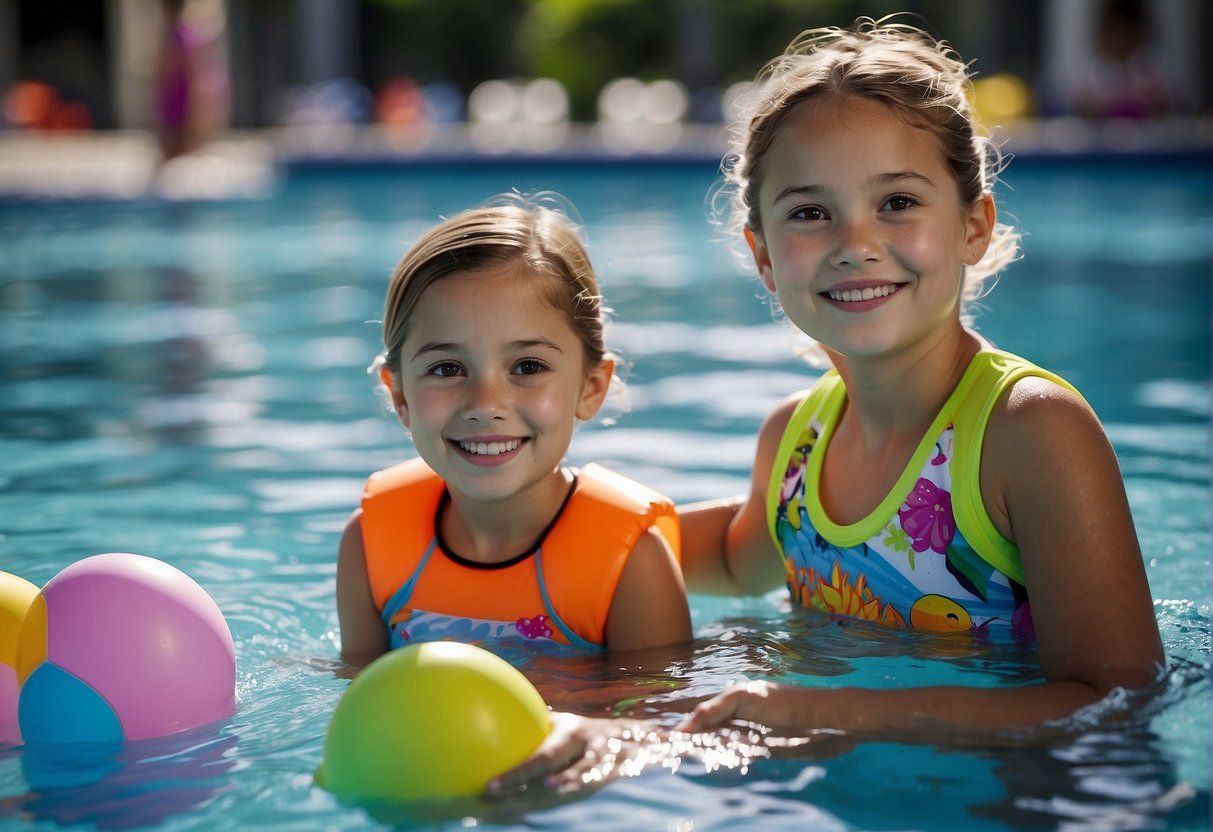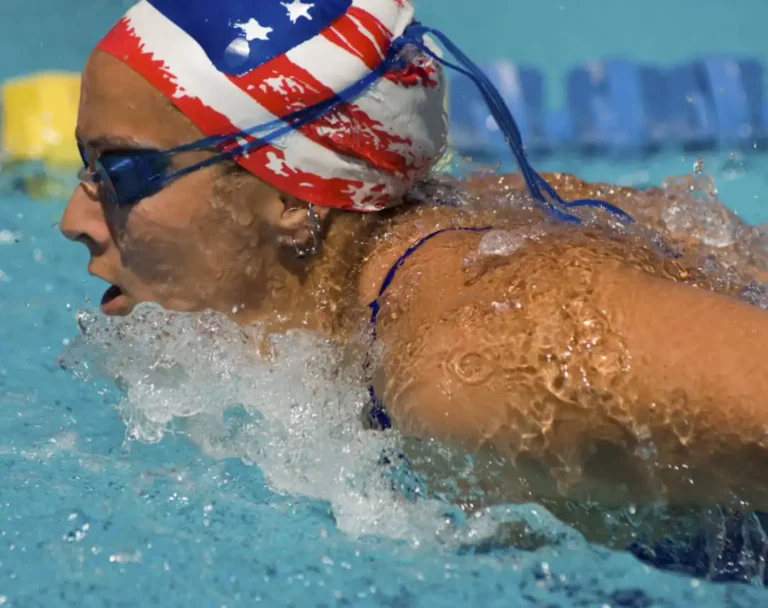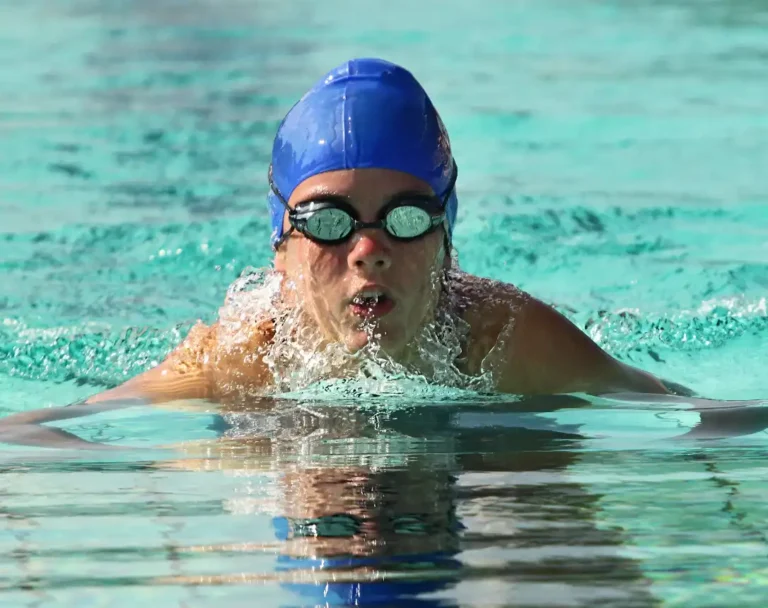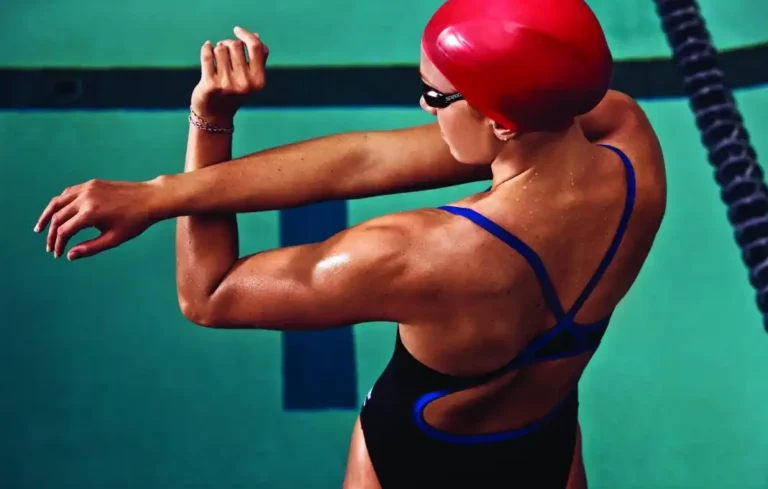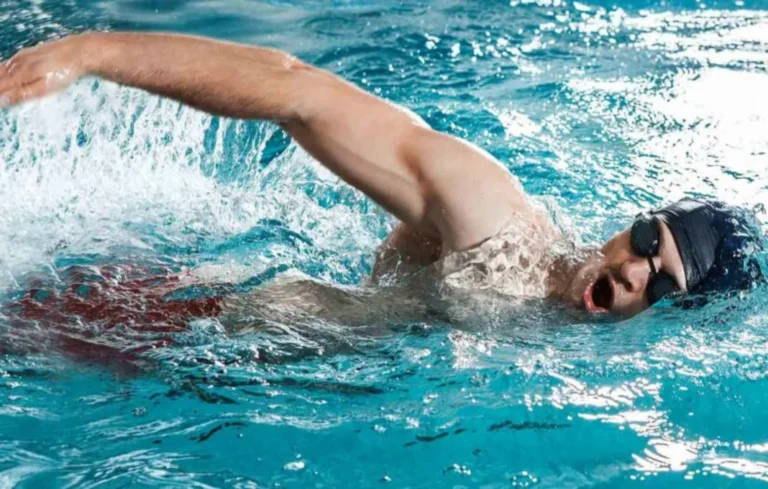Make learning to swim a joyous splash for the little ones with “How to Teach Kids to Swim: 7 Fun and Effective Techniques,” packed with playful and engaging methods that promise waves of progress.
How to Teach Kids to Swim: Getting Started with Swim Basics

Water Safety First
Water safety is paramount. Before your child even dips a toe in the water, make sure they understand the importance of safety. Here’s how:
- Supervision: Always be within arm’s reach, providing undivided attention.
- Life Jackets: Equip your child with a U.S. Coast Guard-approved life jacket for an extra layer of safety.
- Swim Diapers: For toddlers, swim diapers are a must to maintain hygiene in the pool.
- Rules: Instill basic pool rules, like no running on the deck and not entering water without an adult.
Introducing Children to Water
The goal here is to make your child comfortable and water-friendly.
- Start with gentle play in shallow water to minimize fear.
- Gradually introduce the feeling of buoyancy and basic movements like kicking and splashing.
- Use floatation devices like puddle jumpers sparingly as they should not replace actual swimming skills.
- Celebrate each small step your child takes to gain confidence in the water.
Essential Equipment for Swim Lessons
A few basic items can significantly enhance the learning experience:
- Swimwear: Ensure a snug-fit suit that permits free movement.
- Goggles: Protecting the eyes can encourage submersion and exploration.
- Swim Caps: For longer hair, a cap can reduce drag and keep hair out of the face.
- Ear Plugs: Optional for sensitive ears to prevent water from causing discomfort or infection.
Remember, every child learns at their own pace. Recognize their developmental abilities and emotional maturity as you progress through the lessons, and you’ll be setting them up for a lifetime of swimming enjoyment. Let’s get splashing!
Developing Core Swimming Skills

Mastering Breath Control and Buoyancy
Breath control is one of the first skills you’ll introduce. Teach your child to blow bubbles in the water to get comfortable with having their face submerged. This is a stepping stone toward full breath control which is vital for swimming and preventing drowning.
Next, work on buoyancy by practicing floating. Start with the back float and progress to the front float, ensuring the child understands how to maintain their position on the water’s surface.
Breathing and Floating Skills:
- Blowing bubbles
- Back float
- Front float
Learning Basic Strokes and Movements
As your child gains confidence in the water, it’s time to introduce basic swimming strokes. Starting with the doggie paddle is a great way to get them moving through the water.
The focus here is on simultaneous arm and leg movements; ensure they understand the coordination needed. Gradually, introduce more structured strokes such as the breaststroke, backstroke, and treading water, emphasizing proper kicking and arm movement techniques.
Swimming Strokes Introduction Order:
- Doggie Paddle
- Breaststroke
- Backstroke
- Treading Water
Advancing to Independent Swimming
The final goal is for your child to swim independently, which combines endurance, strength, and advanced coordination. At this stage, you’re refining stroke techniques and building up their ability to swim for longer periods without assistance.
Emphasize endurance through practice and repetition, gradually increasing the complexity and duration of their swim lessons to reinforce these life skills. Remember, formal swim lessons can also be extremely beneficial in providing structured learning and proper form guidance.
Developing Swimming Independence:
- Stroke refinement
- Increased practice duration
- Endurance building
- Formal swim lessons
Enhancing Swim Experience and Safety
Incorporating Fun and Games
Water Play: Engage your child’s senses and make learning to swim an adventure with toys and games. Use soft sponges for gentle water play, or spark their imagination with a treasure hunt—equip them with goggles and waterproof toys to seek out ‘hidden treasures’ in the shallow end.
Pool Games: Older kids thrive on friendly competition. Be it relay races or tag games, these activities not only reinforce swimming skills but also incorporate healthful exercise in a spirited manner. Don’t forget that laughter and excitement can be your powerful allies in turning practice into play!
Building Confidence and Enjoyment
Warm Water: Start with warm water to help relax your child and reduce anxiety. It’s a simple yet effective method for making initial interactions with water pleasant.
Encouragement: Positive reinforcement goes a long way. Celebrate every splash and stroke as your child progresses. Begin with short sessions and gradually increase the time as their comfort level grows, reinforcing that the pool is a place of joy.
Reinforcing Safety and Lifesaving Skills
Life Jackets and CPR: Familiarize yourself with the U.S. Coast Guard’s guidelines and select an appropriate life jacket for your child’s age and weight class. Knowing CPR and basic first aid—preferably through a certification—prepares you to handle emergencies.
Swim Competency: Teach water survival and swimming skills early on. The American Academy of Pediatrics recommends swimming lessons for all children to reduce the risk of drowning, a leading cause of death in young kids. Ensure they learn from a certified swimming instructor and understand how to float, tread water, and move to safety.
FAQ:
What age should a child be able to swim?
Children are typically ready to learn to swim by age 4, when they can grasp basic techniques and follow instructions.
How do you teach a child to swim?
Teach a child to swim by starting with water safety, then introduce floating, kicking, and basic strokes, using games and positive reinforcement.
How do I introduce my child to swimming?
Introduce your child to swimming by ensuring a comfortable and safe environment, using floatation devices, and playing fun water games to build confidence.
How to learn swimming for beginners?
Beginners can learn swimming by starting with basic water safety, gradually progressing to floating, kicking, and then mastering different strokes, ideally with a certified instructor.

